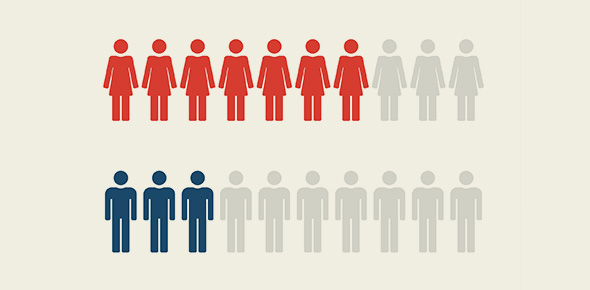Related Flashcards
Related Topics
Cards In This Set
| Front | Back |
|
What 4 conditions are there for effective social learning?
|
A person must:
1. Pay attention to the mdel performing the action 2. Be able to remember the action 3. Have the ability to replicate the action 4. Be motivated to replicate the action |
|
What did Bandura and Walters believe against the theories of aggression of their time?
|
They believed that aggression could not be explained using traditional learning theory where only direct experience was seen as responsible for the acquisition of new behaviours.
|
|
What does social learning theory (SLT) suggest in opposition to traditional learning theory?
|
Social learning theory suggests we learn by observing others, not just by direct experience of behaviour. We learn the specifics of aggressive behaviour (eg. the forms it takes, how often it is enacted, the situations that produce it and the targets towards which it is directed).
|
|
What does SLT say in terms of biological factors?
|
It should not be suggested that the role of biological factors is ignored in SLT, but rather that a person's biological factors make-up creates a potential for aggression, and it is the actual expression aggression that is learned.
|
|
How do children primarily learn their aggressive responses, according to SLT?
|
Children primarily learn their aggressive responses through observation - watching the behaviour of role models and then imitating that behaviour. Whereas Skinner's operant conditioning theory claimed that learning takes place through direct reinforcement, Bandura suggested that children learn just by observing role models with whom they identify.
|
|
How do children learn about the consequences of aggressive behaviour, according to SLT? What sort of reinforcement is this?
|
Children also observe and learn about the consequences of aggressive behaviour by watching others being reinforced or punished. This is called indirect or vicarious reinforcement.
|
|
Where do children witness examples of aggressive behaviour?
|
Children witness examples of aggressive behaviour at home and at school, as well as on television and in films.
|
|
Why is SLT affective in teaching children what is un/acceptable?
|
By observing the consequences of aggressive behaviour for those who use it, a child gradually learns something about what is considered appropriate (and effective) conduct in the world around them. Thus they learn behaviours (through observation) and they also learn whether and when such behaviours are worth repeating (through vicarious reinforcement).
|
|
According to Bandura, what must children do in order for social learning to take place?
|
Bandura claimed that in order for social learning to take place, the child must form mental representations of events in their social environment.
The child must also represent possible rewards and punishments for their aggressive behaviour in terms of expectancies of future outcomes. |
|
Why must children form mental representations of events, punishments and awards in their social environment?
|
When appropiate opportunities arise in the future, the mental representations mean the child will display the learned behaviour as long as the expectation of reward is greater than the expectation of punishment.
|
|
How is a child's behaviour maintained through direct experience?
|
If a child is rewarded (ie. gets what he wants or is praised by others) for a behaviour, he or she is likely to repeat the same action in similar situations in the future. A child who has a history of successfully bullying other children will therefore come to attach considerable value to aggression.
|
|
How is a child's behaviour produced by self-efficacy expectancies?
|
Children also develop confidence in their ability to carry out the necessary aggressive actions. Children for whom this form of behaviour has been particularly disastrous in the past (eg. they weren't very good at it) have less confidence (lower sense of self-efficacy) in their ability to use aggression successfully to resolve conflicts and therefore may turn to other means.
|
|
Describe Bandura's Bobo Doll study.
|
- Male and female children aged 3-5 years
-Half exposed to adult role models interacting aggressively with life-sized inflatable Bobo doll and hald exposed to models that were non-aggressive towards the doll -The model displayed distinctive physically aggressive acts toward the doll, eg. striking it on the head with the mallet accompanied by verbal aggression such as 'POW' -Following exposure to the model, children were frustrated by being shown attractive toys which they were not allowed to play with -Children then taken to a room where, among other toys, there was a Bobo doll -Children in the aggression condition reproduced a good deal of physically and verbally aggressive behaviour resembling that of the model. -Children in the non-aggressive group exhibited virtually no aggression towards the doll -Approx. one third of the children in the aggressive condition repeated the model's verbal responses while none of the children in the non-aggressive group made such remarks -Boys reproduced more imitative physical aggression than girls, but they did not differ in thei imitation of verbal aggression |
|
What does Bandura's Bobo doll study not tell us much about?
|
It does not tell us much about why a child would be motivated to perform the same behaviours in absence of the model - only tells us that children do acquire aggressive responses as a result of watching others.
|
|
Describe Walter and Bandura's study (which came 2 years after Bandura's Bobo Doll study).
|
- Chilrden were divided into three groups, each seeing a different ending to a film of an adult model behaving aggressively towards a Bobo doll.
- Group 1 saw the model rewarded for showing the aggressive behaviour - Group 2 saw the model punished for showing aggressive behaviour - Group 3 observed the model but there were no consequences for aggressive behaviour - Bandura and Walters found that children's subsequent play with the doll was influenced by whichever film ending they'd seen: - those who had seen the model being rewarded for aggressive acts showed a high level of aggression in their own play -Those who had seen the model punished showed a low level of aggression in their play -Those in the no-reward no-punishment control group were somewhere between these two levels of aggression |





